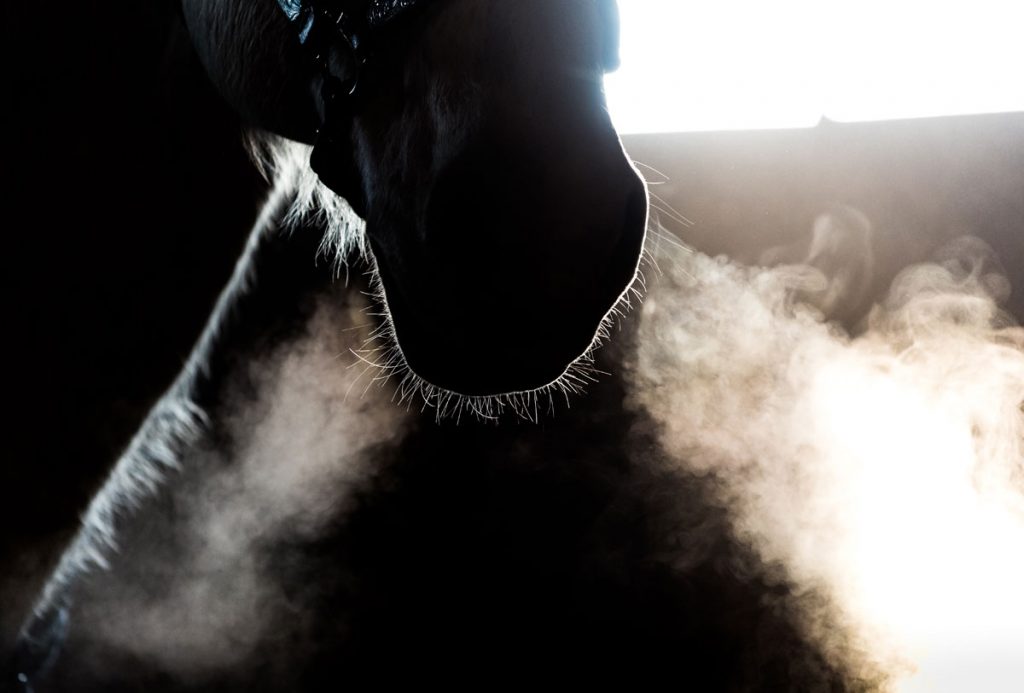Horse Health
Respiratory Allergies in Horses
Horse are natural athletes, and their respiratory system is pivotal to this. A healthy horse at rest takes 10 to 14 breaths per minute, inhaling upwards of 150 litres of air in that time, which increases with exercise. For our horses to thrive and perform well the respiratory system must function properly, to enable them to pump massive amounts of air in and out of the body effortlessly.
But just like us, our horses can suffer from respiratory allergies which can compromise respiratory health, making efficient performance nearly impossible. However, the good news is that with the right care and support, these allergies can be well managed, so follow these guidelines from HomeoPet, to help maximise respiratory health in your horse:
What are Respiratory Allergies?
Respiratory allergies and conditions in horses were generally referred to as COPD (Chronic Obstructive Pulmonary Disorder) for many years. More recently though, this was split into two conditions – IAD (Inflammatory Airway Disease) and RAO (Recurrent airway Obstruction). However, Equine Asthma is now considered a more accurate description of the symptoms – IAD being mild to moderate asthma and RAO being severe Asthma – which includes summer associated asthma. Equine asthma is a complicated respiratory disease that involves several factors, but the main cause is an allergic reaction to specific allergens within the horse’s environment. These allergens are usually airborne particles such organic dust, mould and fungal spores from hay and stables, and pollens when out at pasture during summer.
When a horse inhales these allergens, an allergic reaction can often occur, resulting in inflamed airways, increased production of mucus, and airway constriction, which restricts the amount of air getting to the horse’s lungs. To compensate the horse must make an increased effort to breathe and develops a cough to clear trapped mucus along with other common symptoms:
Signs and Symptoms of Equine Asthma
- Nasal discharge
- Frequent cough
- Exercise intolerance
- Increased respiratory rate and effort
- Development of a ‘heave line’ (due to increased respiratory effort using chest and abdominal muscles)
- Acute attacks of respiratory distress due to repeated exposure to dust or pollens

Treatment and management
Whilst there is no ‘cure’, steps can be taken to manage equine asthma. Good changes in management can help to minimise the symptoms and may be all that is needed for horses with mild to moderate asthma, with many horses responding to changes in management alone if caught early.
Good management involves removing the cause of the allergy (whether this is dust, pollen or fungal spores). In general, affected horses should be kept on a ‘dust free’ management system to keep environmental allergens to a minimum.
Changing bedding from straw to shavings, paper or other non-organic material can help, as well as ensuring your horse’s bed is scrupulously clean. Hay is one of the biggest factors in the development of equine asthma, so it’s essential to reduce the levels of airborne particles it contains. Soaking hay is one of way of reducing inhalation of airborne particles because it results in the spores swelling and sticking to the hay so that the horse effectively swallows instead of inhales them. However, soaking increases the bacteria content within hay, decreasing the hygiene quality. The most effective way of reducing airborne spores and particles within hay for horses with asthma, is to steam it using a specifically designed forage steamer. Steaming in this way has been shown to reduce respirable particles by 98% whilst retaining the hygiene quality of the hay. Alternatively, feeding affected horses haylage is a good option because of the much lower levels of dust and mould haylage contains.
Affected horses should be kept away from dry hay and straw stores, and other horses eating dry hay or bedded on straw and turned out as much as possible, ideally 24/7 all year round. Horses with summer pasture associated asthma, however, which is triggered by pollen exposure from being out at pasture during the day, need to have this exposure reduced. You can do this either by moving them to a lower pollen area or stabling them in a dust free environment until the pollen levels have dropped.
Good ventilation within stables is also essential to improve air flow and reduce exposure to airborne particles within the stable. Barn type stabling is not ideal for horses with equine asthma who need to be stabled where there is plenty of fresh air around for better ventilation.
Nutritionally, feeding good levels of Omega 3 fatty acids, which have strong anti-inflammatory properties could be beneficial in negating inflammation within airways. Linseed meal is a potent source of Omega 3 fatty acids so could be a useful addition to the horse’s diet.
How HomeoPet EquioPathics can help
The EquioPathics range from HomeoPet can help provide vital homeopathic support if your horse suffers from equine asthma and allergies. EquioPathics Cough and Allergy will provide temporary relief from the most common symptoms of asthma, including coughing, wheezing, runny nose and shortness of breath, helping your horse whenever symptoms arise.
EquioPathics Cough and Allergy can be used in combination with a dust-free management regime to help your horse feel happier, more comfortable and reduce the impact of their allergies.
Effective management and support are key to owning a horse with Equine Asthma. Maintaining a clean, dust-free environment with good ventilation, along with the relief of symptoms, will help reduce severity and support improved respiratory health.






Pingback: Respiratory illness in pets. Don’t just worry about winter. - HomeoPet